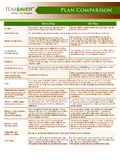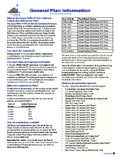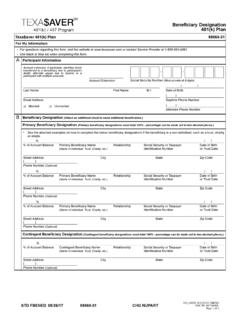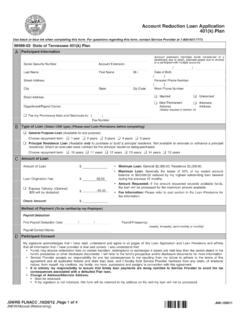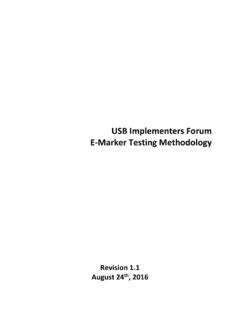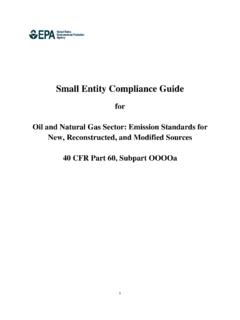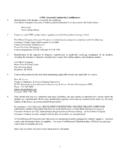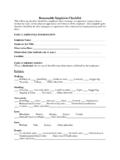Transcription of EXPLANATION OF COMPLIANCE TESTING
1 EXPLANATION OF COMPLIANCE TESTING . IRC 401(k)(3) ACTUAL DEFERRAL PERCENTAGE TEST (ADP) and/or IRC 401(m)(2) ACTUAL CONTRIBUTION PERCENTAGE TEST (ACP). To pass either the ADP or ACP test one of two tests must be met: Basic Test: the average deferral/contribution percentage of the highly compensated employee (HCE) group must not exceed 125%. of the average deferral/contribution percentage of the non-highly compensated employee (NHCE) group Alternative Test: the average deferral/contribution percentage of the HCE group must not exceed the average deferral/contribution percentage of the NHCE group by the lessor of 2 plus or 2 times the ADP or ACP of the NHCEs IRS regulations allow the use of either prior year or current year TESTING methods which is outlined in your plan document. Under both the prior and current year TESTING methods, the ADP or ACP for the HCEs is always determined using data from the plan year being tested. If the current year method is used, the ADP or ACP for the NHCEs is also determined using data from the plan year being tested.
2 However, if the prior year test method is used, the ADP or ACP for the NHCEs is determined using data from the preceding plan year. A number of restrictions apply in order to switch between these methods. IRC 401(a)(17) COMPENSATION LIMITS. This provision applies an annual compensation limit to each employee who participates in a qualified plan. The compensation limit is applied when calculating a participant's contributions for the plan year ( deferrals, employer non-elective or match contributions) and in nondiscrimination TESTING . The dollar limit is effective January 1 and is applied in the calendar year in which the plan year begins. For 2003. the compensation limit is $200,000. IRC 402(g) LIMITATION OF ELECTIVE DEFERRALS. In 2003, the IRS limited the amount a participant could defer in aggregate to all plans they participated in, to $12,000 per calendar year. This limitation will be increased by $1,000 each year, until 2006, when it reaches $15,000. If there are 402(g) violations, excess deferrals and any income accrued must be returned to the participant by April 15 following the year of excess deferral.
3 If distributed by April 15, the excess deferral is taxable to the participant in the year the deferral was made with income attributable to the excess deferral being taxable in the year distributed. IRC 410(b) MINIMUM COVERAGE. In order to maintain its qualified status, a plan must benefit a minimum percentage of eligible NHCEs. Each component of your plan (employee deferrals, employer matching contributions, and employer non-elective contributions) must pass the coverage test. The Ratio Percentage Test requires that a plan benefit a percentage of NHCEs equal to 70% or more of the percentage of HCEs who benefit under the plan. Your plan's coverage ratio is determined by dividing the ratio of NHCEs by the ratio of HCEs. If the plan fails the ratio percentage test, it may still pass under a more complicated TESTING procedure called the Average Benefit Test. Generally, employees who are not counted for purposes of this test are: employees who have not met the minimum age and service requirements of the plan, employees who are covered by a collective bargaining agreement (union employees), certain non-resident aliens with no source income, and if the plan provides, those who have worked less than 501 hours and/or are not employed on the last day of the plan year.
4 IRC 414(q) HIGHLY COMPENSATED EMPLOYEE DEFINITION. An employee will be considered to be a highly compensated employee (HCE) if he/she meets any of the following: the employee owned more than 5% of the stock of the employer at any time during the current plan year or during the preceding 12. months of the plan year an employee who is a lineal ascendant, descendant, or spouse ( spouse, children, parents or grandparents) of a more than 5%. owner is treated as owning the same interest and is an HCE. the employee had compensation in excess of $90,000 during the 12 months preceding the plan year and, if elected by the employer, he/she was in the top 20% of employees ranked by compensation for the 12 months preceding the plan year. IRC 414(s) COMPENSATION RATIO TEST. If a plan excludes certain forms of compensation (such as bonuses, commissions, or overtime) this test must be performed. It requires that the average of the ratio of plan compensation to total compensation for the HCE group be not more than a deminimus amount higher than the average of the ratio of plan compensation to total compensation for the NHCE group.
5 The IRS has used 3% as a safeguard, but each plan is viewed on a facts and circumstances basis. IRC 414(v) CATCH-UP CONTRIBUTIONS. Any participant age 50 or older will be able to make annual catch-up contributions in addition to their normal elective deferrals. The amount will begin at $1,000 in 2002 and increase by $1,000 each year, until 2006, when it reaches $5,000. This provision applies to all plans unless elected otherwise in your plan document. A contribution is considered a catch-up contribution when it exceeds one of the following three limitations: Statutory Limit: A participant's elective deferrals may be limited by the Statutory Limits, which include the Elective Deferral Limitation under IRC 402(g) and the Annual Additions Limit under IRC 415. Consider the XYZ Company 401(k) Plan, which has a plan year end of December 31, 2002. Employee X defers $12,000 during the year; therefore, $1,000 is in excess of the 402(g) limit. Since Employee X is over 50 years of age, $1,000 will be treated as a catch-up contribution, if permitted by the plan.
6 Employer-Provided Limit: A plan may contain a provision that restricts the amount of elective deferrals an employee is able to contribute. If an individual exceeds this limit and is eligible for catch-up contributions, the amount exceeding the plan limit will be categorized as such, as long as it does not exceed the the Catch-up Limit for the year. For example, the Emergency Medical Center 403(b) Plan imposes a 15% limit on the amount of employee deferrals. Employee Y contributes 10% for the first quarter of the plan year and 20% in the remaining three quarters of the plan year, so that he deferred of his pay for the year. It is determined at the end of the plan year that the individual exceeded the plan-imposed 15% of pay limit by of pay, which equates in Y's case to $2,000. The first $1,000 is considered a catch-up contribution and the remaining amount is in violation of the plan's terms. Actual Deferral Percentage (ADP) Limit: An Actual Deferral Percentage (ADP) Limit is imposed on 401(k) plans.
7 The Actual Deferral Ratio (ADR) for a participant is calculated without regard to the amount that may be considered for catch-up due to the Statutory Limit and/or the Employer-Provided Limit. If a plan fails the ADP test, the amount to be refunded to catch-up eligible participants is first offset by the amount of the Applicable Dollar Catch-up Limit. The catch-up amount due to Actual Deferral Percentage (ADP) Limit is calculated after the ADP test has been performed; all amounts eligible for disbursement under 401(k)(8) or 408(k)(6)(C) must be re-categorized as catch-up contributions, up to the Applicable Dollar Catch-up Limit. IRC 415 MAXIMUM ANNUAL ADDITIONS. Under IRC 415(c), the annual additions that are credited to the participant's account may not exceed the lesser of $40,000 or 100% of the participant's 415 compensation. Annual additions include, but are not limited to, employer contributions, forfeitures that are reallocated to the participants, and employee contributions to all plans.
8 IRC 416(i)(1)(a) KEY EMPLOYEE DEFINITION. Effective January 1, 2002, a key emp loyee is any employee who at any time during the current plan year or the preceding plan year is: a greater than 5% owner of the stock of the employer a greater than 1% owner of the stock of the employer and earning annual compensation from the employer in excess of $150,000. an officer of the company receiving compensation in excess of $130,000 (the compensation limit is subject to cost of living adjustments of $5,000 each year beginning in 2003). IRC 416 TOP HEAVY TEST. Your plan may be considered top heavy for the next plan year if the account balances of key employees are more than 60% of the account balances of all employees as of the last day of the current plan year. If your plan is top heavy for a given plan year, the employer must make a minimum contribution to the accounts of all non-key employees. Generally the minimum is 3% of each non-key employee's compensation or if less, the highest rate of contribution made by or on behalf of any key employee.
9 Non-key employees are entitled to receive this contribution if they are employed on the last day of the plan year regardless of the number of hours worked during the plan year. Account values attributable to employer contributions must also be vested according to an IRS approved top-heavy vesting schedule. A more favorable vesting schedule may be needed if your plan is Top Heavy. Please refer to your plan document for a detailed EXPLANATION regarding your Top Heavy vesting schedule.
